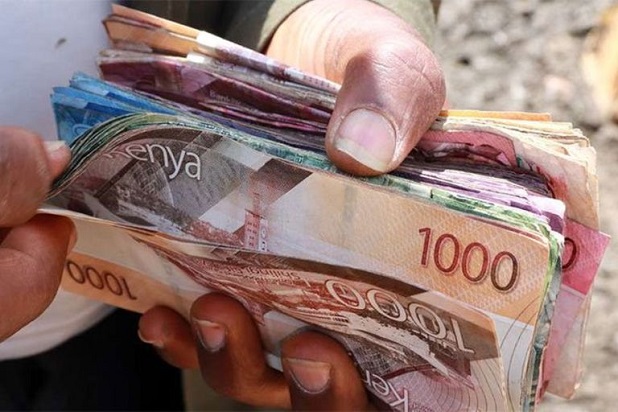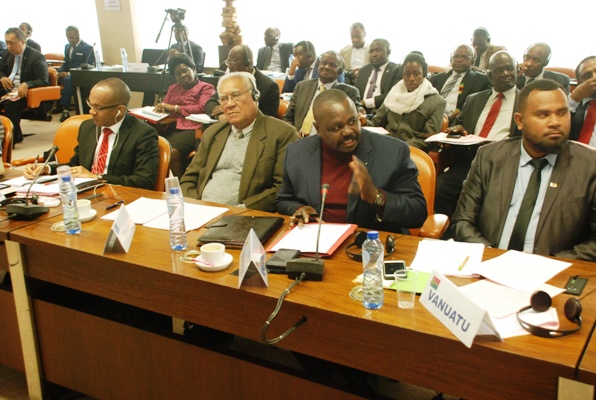The average monthly income for Kenyans rose at the fastest pace in six years to Sh20,123 following recovery from Covid-19 economic hardships in changes that reflect the growing pay inequality.
Kenya National Bureau of Statistics (KNBS) data show the country’s annual gross national income (GNI) per capita grew 11.6 per cent to hit Sh241,467 ($1,979) last year, up from Sh216,337 ($1,773) in 2020.
The measure of average income—which captures money earned from both the formal and the informal sector—however, reveals the deep wealth and earnings inequality in Kenya that has left the country with a thin middle class and super earners with the majority remaining stuck in the lower income bracket.
GNI estimates the total amount of money earned by individuals and businesses in a country in a set period and is considered an alternative measure to gross domestic product (GDP), which estimates the total value of all goods and services produced within a period.
In Kenya, income rose at a faster pace last year as businesses reopened or resumed full activity after the contraction in 2020 when Covid-19 containment measures restricted economic activity and slashed hundreds of thousands of jobs.
Kenya’s economy rebounded to grow 7.5 per cent in 2021 compared to a contraction of 0.3 per cent a year earlier, largely boosted by the recovery in key sectors with the exception of agriculture.
The GNI per capita of Sh241,467 ($1,979) or Sh20,123 monthly has improved Kenya’s rankings since the World Bank upgraded the country to a lower middle-income classification from least developed countries (LDCs) in 2015 when it stood at $1,310.
The lower-middle-income classification demands that countries’ annual income range from $1,046 to $4,125.
A higher income ranking means Kenya cannot benefit from some aid designed for the poorest countries, economists say.
Conversely, investors may be more attracted to a nation with a population that has more cash to spend.
Kenya’s economy has grown on average by 5.0 per cent annually over the last decade save for the Covid-19 contraction, but the benefits have not been equally distributed, and the gap between rich and poor is rising, say campaigners.
The number of super-rich in Kenya is among the fastest growing in the region.
Yet while a minority of Kenyans are accumulating wealth, the benefits of economic growth have not trickled down.
According to an earlier report by Kenya Fight Inequality Alliance, just 8,300 individuals in Kenya own the same wealth as the rest of the country’s over 45 million people, and the richest 10 per cent earn 23 times more than the poorest 10 per cent.
The majority of the 2.9 million individuals employed in the formal sector are domiciled in the lower wage brackets, with only 358,833 or 15 per cent earning more than Sh100,000 per month.
Some 1.18 million workers or 40 per cent are paid below Sh50,000 per month and at least 51,770 are earning below the national average of Sh20,123.
Data from Knight Frank’s Wealth Report show that the country was home to 3,362 dollar millionaires at the end of last year, with the number expected to grow to 4,274 by 2026.
Out of these dollar millionaires, 88 have a net worth of more than $30 million (Sh3.7 billion), placing them in the ultra-high net worth category.
This emerged in a year when the proportion of financially stable Kenyans more than halved in a period of five years amid runaway cost of living and stagnant pay, a Central Bank of Kenya-backed household survey showed.
The Financial Access (FinAccess) Household survey found that the share of adults with high levels of financial health to afford their day-to-day financial needs, deal with emergencies and invest in future goals – technically called the top wealth quintile – shrank to 15 per cent last year from 40 per cent.
Wealth is also concentrated in major urban centres, highlighting the inequality in the country’s economic development that has partly been attributed to the previous centralised system of government which guided sharing of resources since independence.
Nairobi, Kiambu, Mombasa and Nakuru are Kenya’s richest counties while Isiolo, Lamu, Tana River and Samburu are the poorest, as per KNBS data. Nairobi, with a contribution of 27.5 per cent to the overall GDP, is by far Kenya’s richest county and is more than three-and-a-half times larger in economic terms than Kiambu, the second-richest county with a 5.9 per cent share of the GDP.
Mombasa (5.2 per cent, Nakuru (4.9 per cent) and Machakos (3.5 per cent) complete the list of Kenya’s top five wealthiest counties in GDP terms.
Income distribution follows the same trend, with the best-paying jobs found in sectors that are primarily found in urban centres.
Employees in the NGO and international organisations sector took home the highest monthly average wage of Sh313,084 last year, nearly double that of the second-best-paying sector.
The financial services sector—comprising banks, insurance firms and investment companies— was the second-highest paying with an average monthly pay packet of Sh173,506, followed by energy supply at Sh173,104 per month.
Others offering workers an average wage above Sh100,000 per month were administrative and support service activities (Sh144,539), transportation and storage (Sh128,011) and professional, scientific and technical activities at Sh123,223.
Workers in household activities, including nannies and domestic helpers, earned Sh24,907 per month.
Other low earners were in sectors such as water supply and waste management (Sh24,574) and real estate (Sh27,280).
The agricultural sector, which is the largest formal employer, saw workers attract a monthly salary of Sh31,469 while accommodation and food services had workers earning a monthly salary of Sh37,393.
Source: Business Daily Africa





